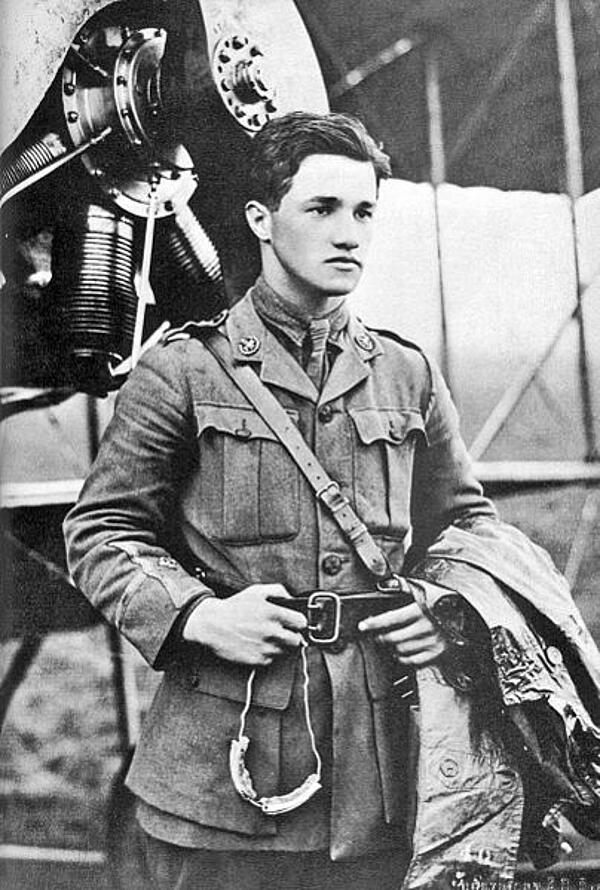Albert Ball
Albert Ball was arguably the Royal Flying Corp’s most famous flying ‘ace’ during World War One. While he didn’t shoot down as many planes as some, be did do a good job of representing what a flying ace should be - young, handsome, modest and brave.
Albert Ball was born on 14th August 1896 and joined the Sherwood Foresters Regiment when World War One broke out. After taking private flying lessons, Ball joined the Royal Flying Corps in 1915 and was awarded his wings in January 1916.
In February, Ball was sent to France where he discovered he had a natural ability to fly single-seat fighter aeroplanes, as well as natural aggression towards the enemy. He quickly gained a reputation for being a formidable opponent and a ‘lone wolf’ who like to attack on his own rather than as part of a team. He also epitomised all that Hugh Trenchard wanted from the RFC as the war progressed.

Ball was so successful that on 27th June 1916, he was awarded a Military Cross. In October of the same year he was also awarded the Distinguished Service Order (DSO) and two bars - the first person in the British Army to be awarded this. To many, he was considered a national hero. Although he made it clear this was not a label he wanted.
In April 1917, Ball returned to France to head his own squadron, No.56. Sadly, he was killed just one month later on 7th May in combat. There is some doubt as to why he crashed behind German lines but the kill was claimed by Lothar von Richthofen. Ball was buried with full military honours.
During his career, Ball was credited with one balloon shot down, 28 aircraft including one shared, six out of control aircraft and nine forced to land. On 8th June 1917, Ball was awarded a posthumous Victoria Cross for his actions. The citation read as follows:
“Lt. (temp. Capt.) Albert Ball, D.S.O., M.C., late Notts. and Derby R., and R.F.C.
For most conspicuous and consistent bravery from the 25th of April to the 6th of May, 1917, during which period Capt. Ball took part in twenty-six combats in the air and destroyed eleven hostile aeroplanes, drove down two out of control, and forced several others to land. In these combats Capt. Ball, flying alone, on one occasion fought six hostile machines, twice he fought five and once four. When leading two other British aeroplanes he attacked an enemy formation of eight. On each of these occasions he brought down at least one enemy. Several times his aeroplane was badly damaged, once so seriously that but for the most delicate handling his machine would have collapsed, as nearly all the control wires had been shot away. On returning with a damaged machine he had always to be restrained from immediately going out on another. In all, Capt. Ball has destroyed forty-three German aeroplanes and one balloon, and has always displayed most exceptional courage, determination and skill.”
His death in combat at an early age did have an impact on the RFC at the time causing much despondency – such was his status among other pilots.
MLA Citation/Reference
"Albert Ball". HistoryLearning.com. 2024. Web.
